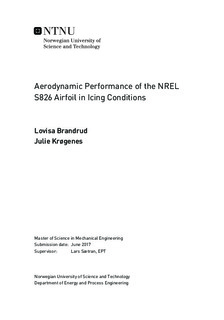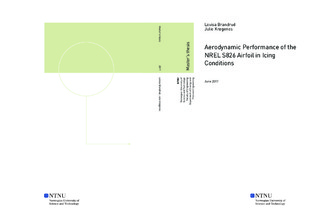| dc.description.abstract | The demand for wind power is rapidly increasing, creating an opportunity for wind farm installations in more challenging climates. Cold climate areas, where ice accretion can be an issue, are often sparsely populated and have high wind energy potential. Icing may lead to severely reduced aerodynamic performance and thereby reduced power output. To reach a greater understanding of how icing affects the aerodynamics of a wind turbine blade, three representative icing cases; rime ice, glaze ice and a mixed ice, were defined and investigated experimentally and computationally. Experiments at Re= 1.0 E5 - 4.0 E5 were conducted in the low-speed wind tunnel at NTNU, determining lift, drag and surface pressure distributions. Computational results, obtained from the Reynolds Averaged Navier-Stokes fluid dynamics code FENSAP, complement the experiments. Measured and predicted data show a reduction in lift for all icing cases. Most severe is the mixed ice case, with a lift reduction of up to 30% in the linear lift area, compared to a clean reference airfoil. Computational results show an under-prediction in maximum lift of 7 - 18% compared to experimental values. Curvature and tendencies for both lift and drag show good agreement. | |

